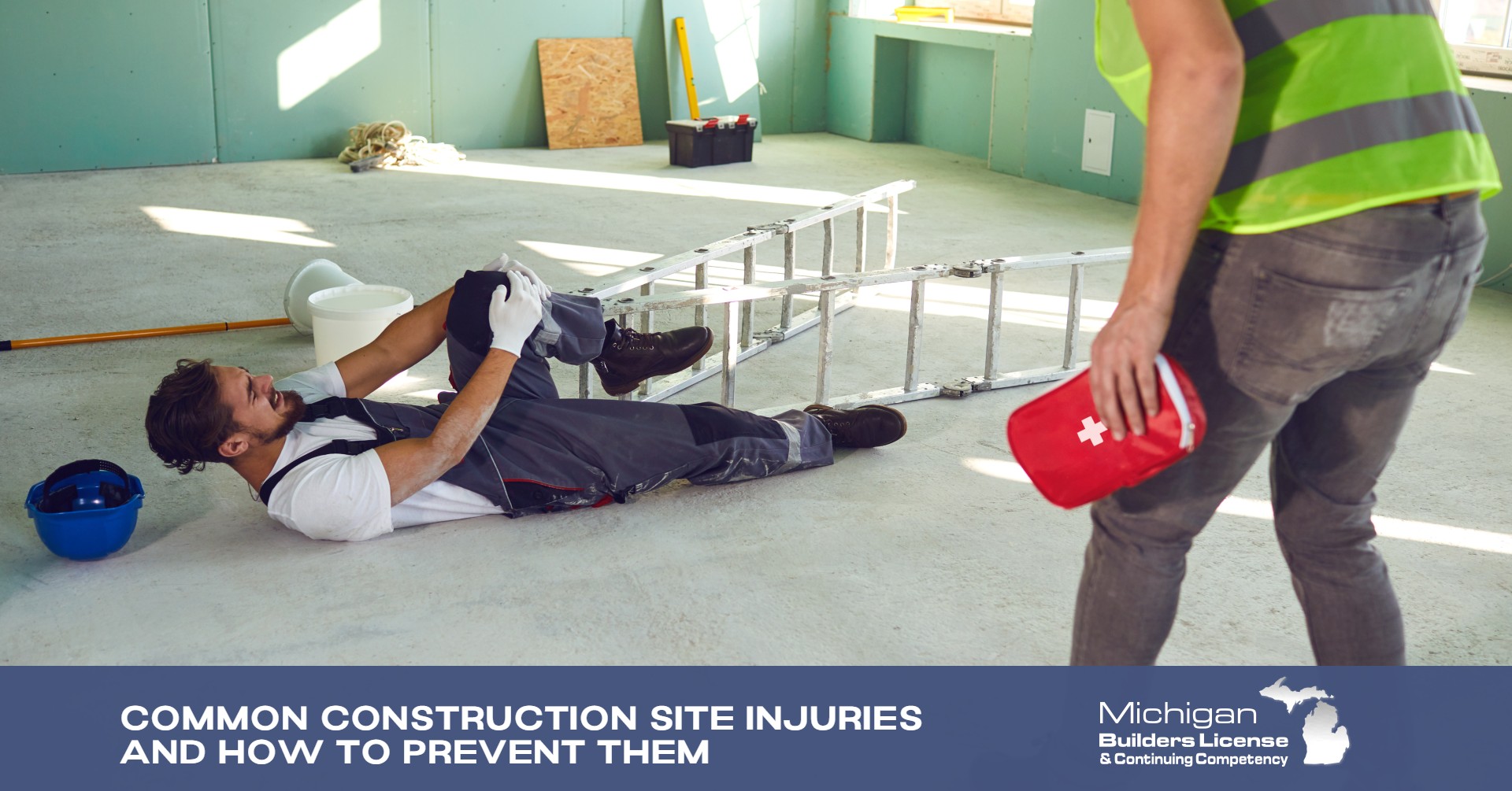Construction sites are inherently dangerous environments where workers are exposed to various hazards daily. Despite advances in safety protocols and protective equipment, injuries on construction sites remain prevalent. Understanding the most common types of injuries and how to prevent them is crucial for anyone in the construction industry. Here, we will highlight some of the most frequent construction site injuries and offer tips on how to minimize their occurrence, with a focus on best practices for builders in Michigan.
Falls from Heights
Falls are one of the leading causes of injuries and fatalities on construction sites. Workers often perform tasks at elevated locations, such as scaffolding, ladders, or rooftops. According to the Occupational Safety and Health Administration (OSHA), falls account for over 30% of all construction-related fatalities.
Prevention Tips:
- Use Proper Fall Protection Equipment: Ensure workers are equipped with harnesses, guardrails, and safety nets when working at heights.
- Regular Equipment Inspections: Regularly inspect all fall protection gear to ensure it is in good working condition.
- Training: Safety officers or supervisors should provide comprehensive training for workers on the proper use of fall protection equipment and the importance of adhering to safety protocols. They are crucial in ensuring all workers are well-informed and equipped to handle potential hazards.
Struck-by Accidents
Struck-by accidents occur when falling objects, vehicles, or equipment hit workers. This type of injury is particularly common in areas with heavy machinery or overhead work.
Prevention Tips:
- Secure Tools and Materials: Ensure all tools, materials, and equipment are properly secured, especially when working at heights.
- Use Warning Signs: Place clear warning signs in areas where there is a risk of falling objects or heavy machinery operation.
- Wear Personal Protective Equipment (PPE): Hard hats and high-visibility clothing protect workers from struck-by hazards.
Electrocution
Electrocution is a significant risk on construction sites, particularly during electrical installation or maintenance. Contact with live wires or faulty electrical equipment can lead to severe injuries or death.
Prevention Tips:
- De-energize Circuits: Before beginning any electrical work, always de-energize circuits and verify that they are safe to handle.
- Use Ground Fault Circuit Interrupters (GFCIs): GFCIs can prevent electrical shocks by shutting off power when a fault is detected.
- Training and Certification: Ensure that all workers handling electrical tasks are properly trained and certified.
Caught-in/between Accidents
Caught-in/between accidents happen when a worker is crushed or caught between equipment, materials, or collapsing structures. These incidents are often fatal or result in severe injuries.
Prevention Tips:
- Proper Machine Guarding: Ensure all machinery is equipped with guards to prevent workers from being caught in moving parts.
- Excavation Safety: Follow OSHA guidelines for trenching and excavation to prevent cave-ins and other caught-in/between hazards.
- Stay Alert: Remind your team to always remain vigilant and aware of their surroundings. This will make them feel responsible and proactive in avoiding dangerous situations.
Overexertion and Repetitive Stress Injuries
Construction work often involves heavy lifting, repetitive motions, and prolonged physical activity, leading to overexertion and stress injuries. These injuries can range from muscle strains to long-term conditions like carpal tunnel syndrome.
Prevention Tips:
- Ergonomics Training: Teach workers how to perform tasks to minimize strain on their bodies, such as lifting techniques and the proper use of tools.
- Regular Breaks: Encourage your team to take regular breaks to rest and recover from physically demanding tasks. This will prevent overexertion and make them feel cared for and valued.
- Use of Mechanical Aids: Whenever possible, use mechanical aids like forklifts, hoists, or carts to reduce the physical burden on workers.
The construction industry is vital to Michigan's economy but poses significant risks to workers. Builders can create a safer work environment by understanding the most common construction site injuries and implementing effective prevention strategies. Regular safety training, adherence to OSHA guidelines, and the use of appropriate safety equipment are essential steps in reducing the incidence of workplace injuries. For Michigan builders, staying informed and proactive about construction site safety is not just a regulatory requirement but a moral obligation to protect their workforce.




